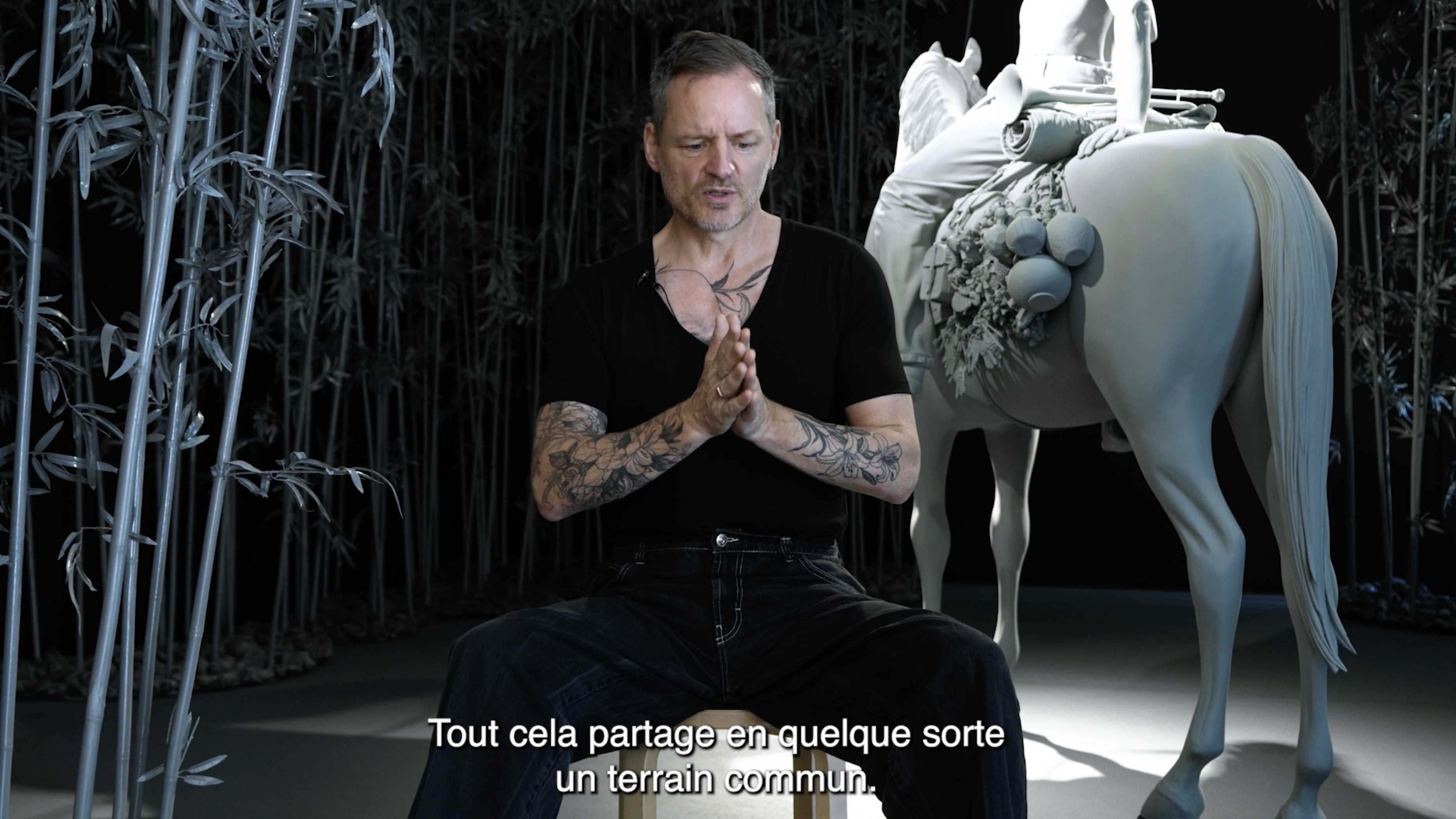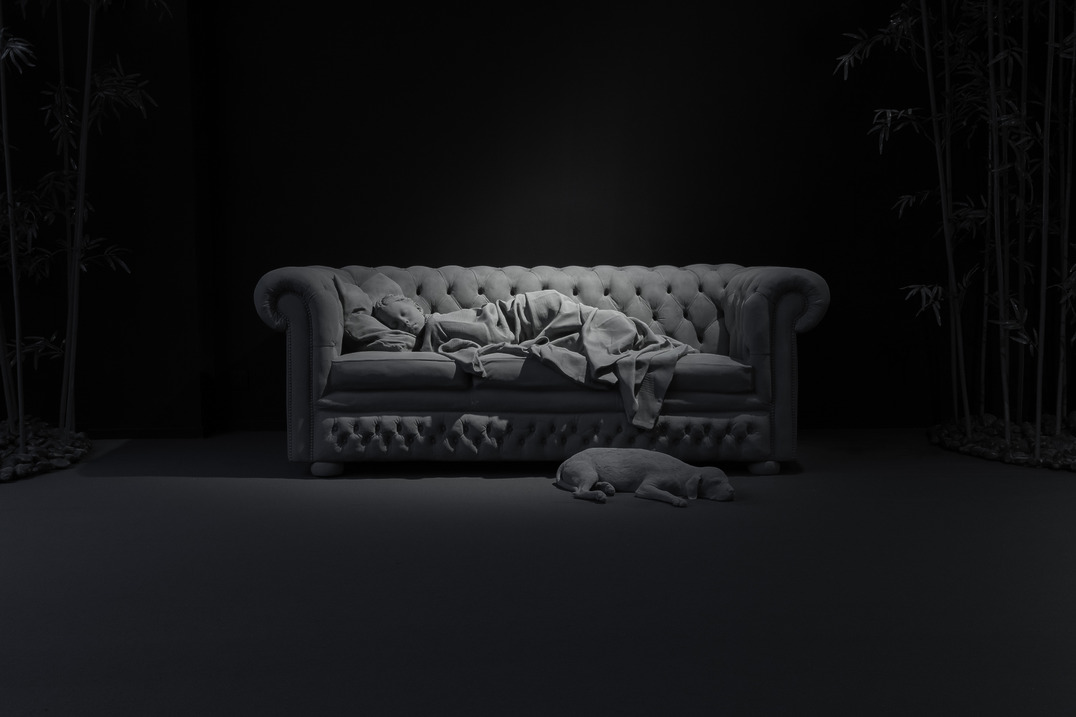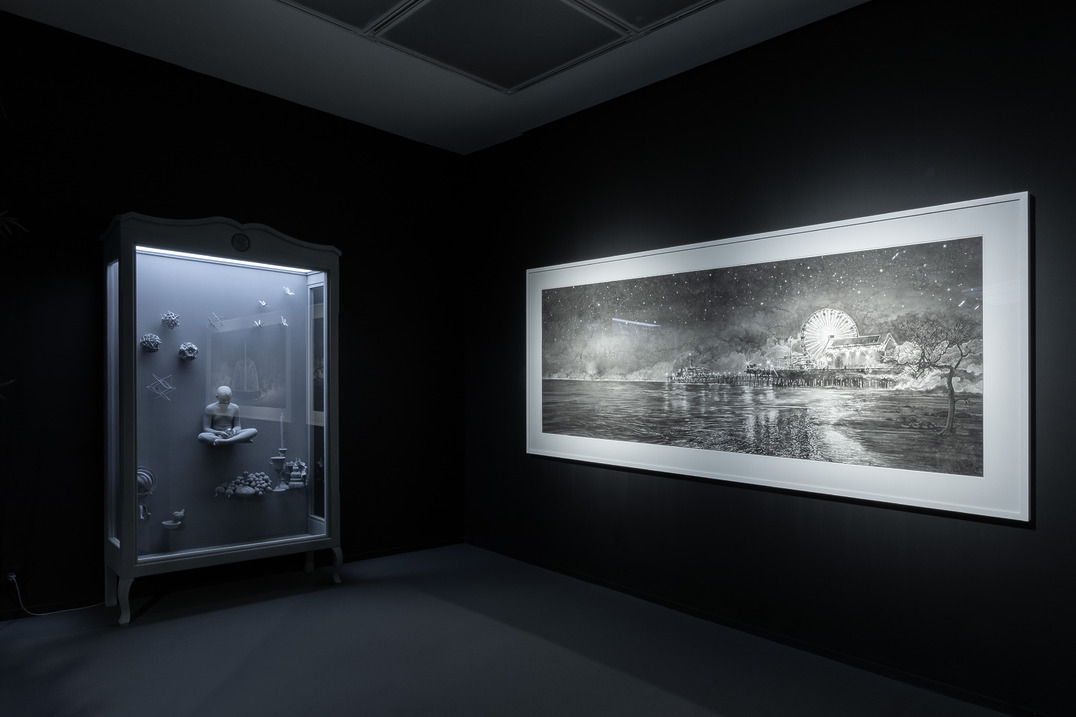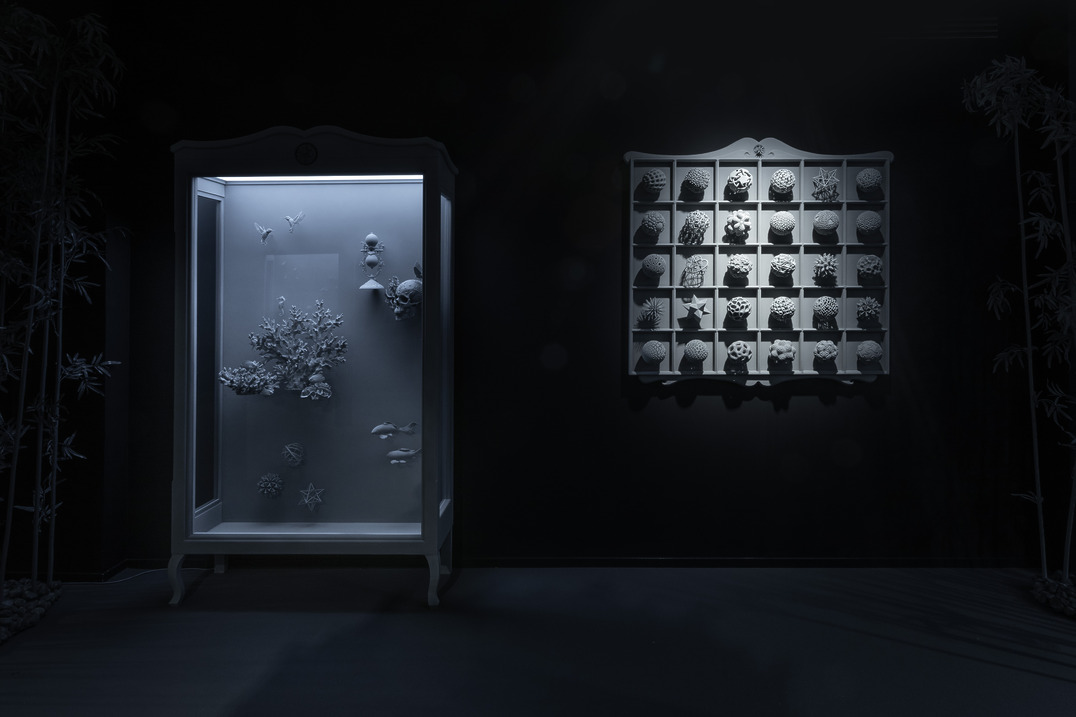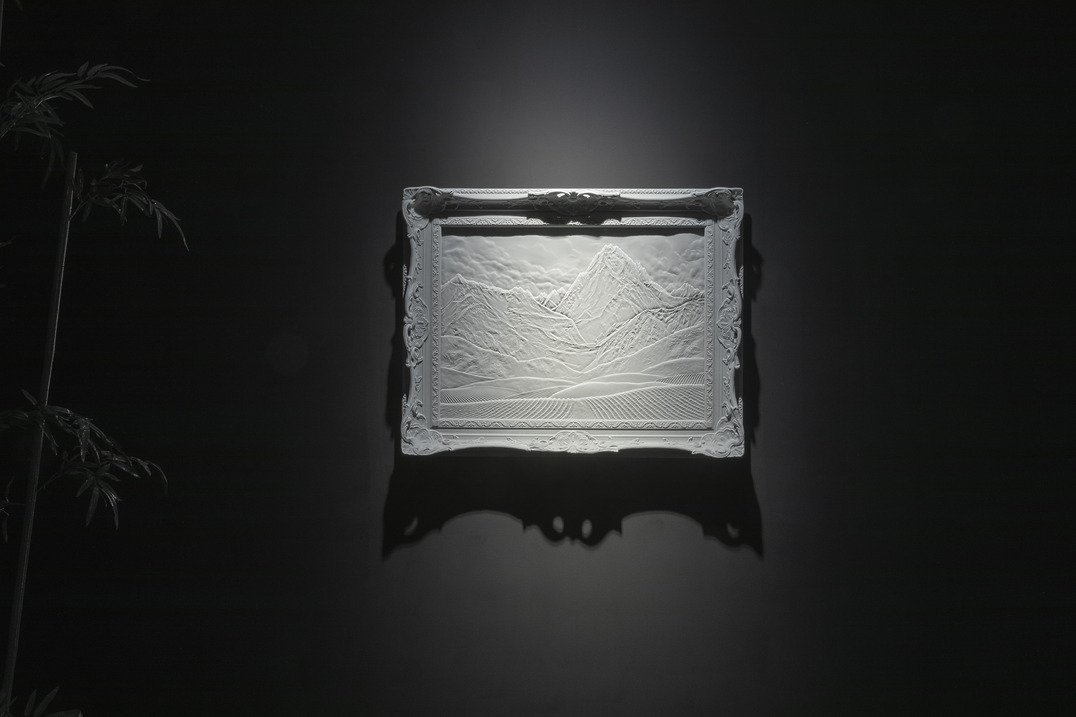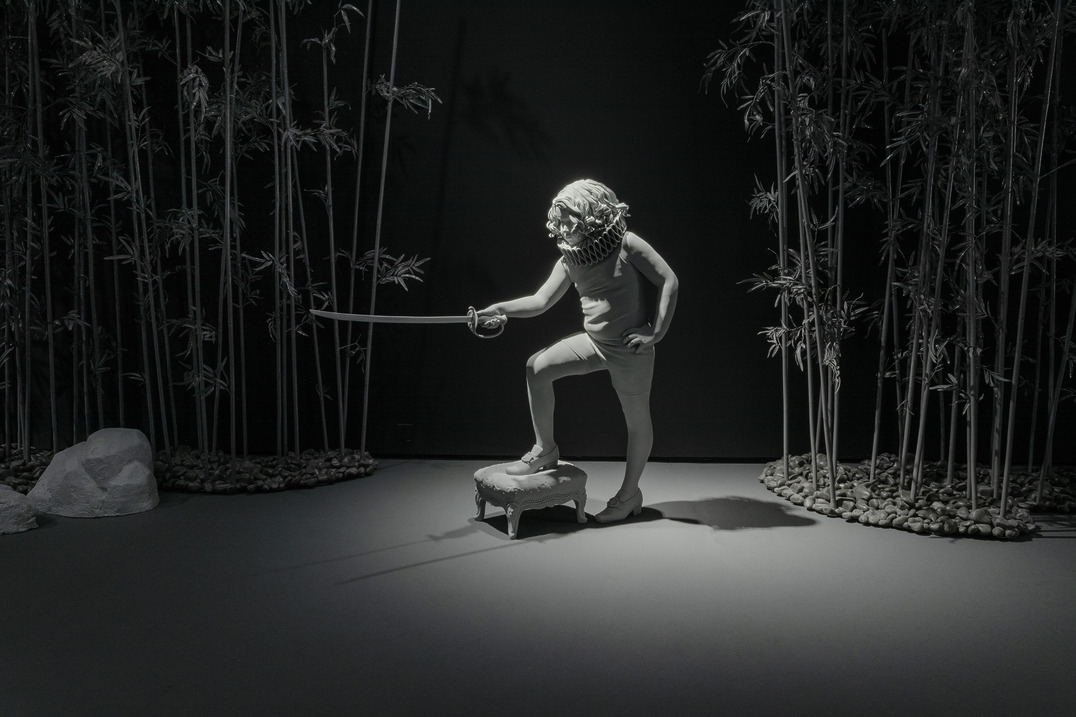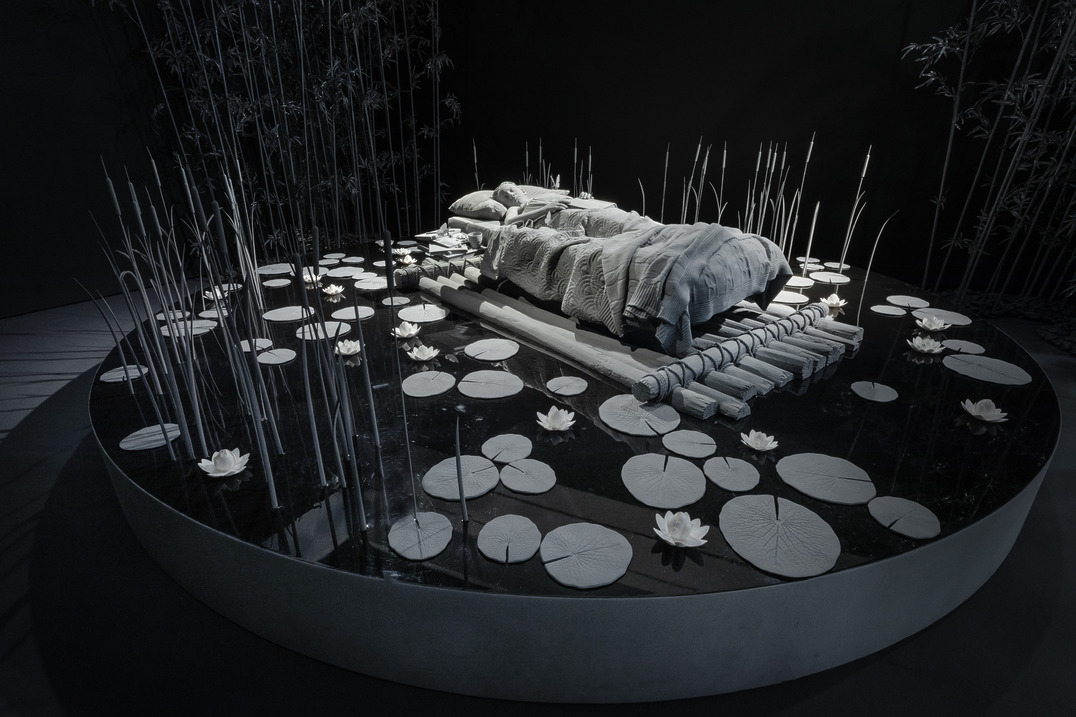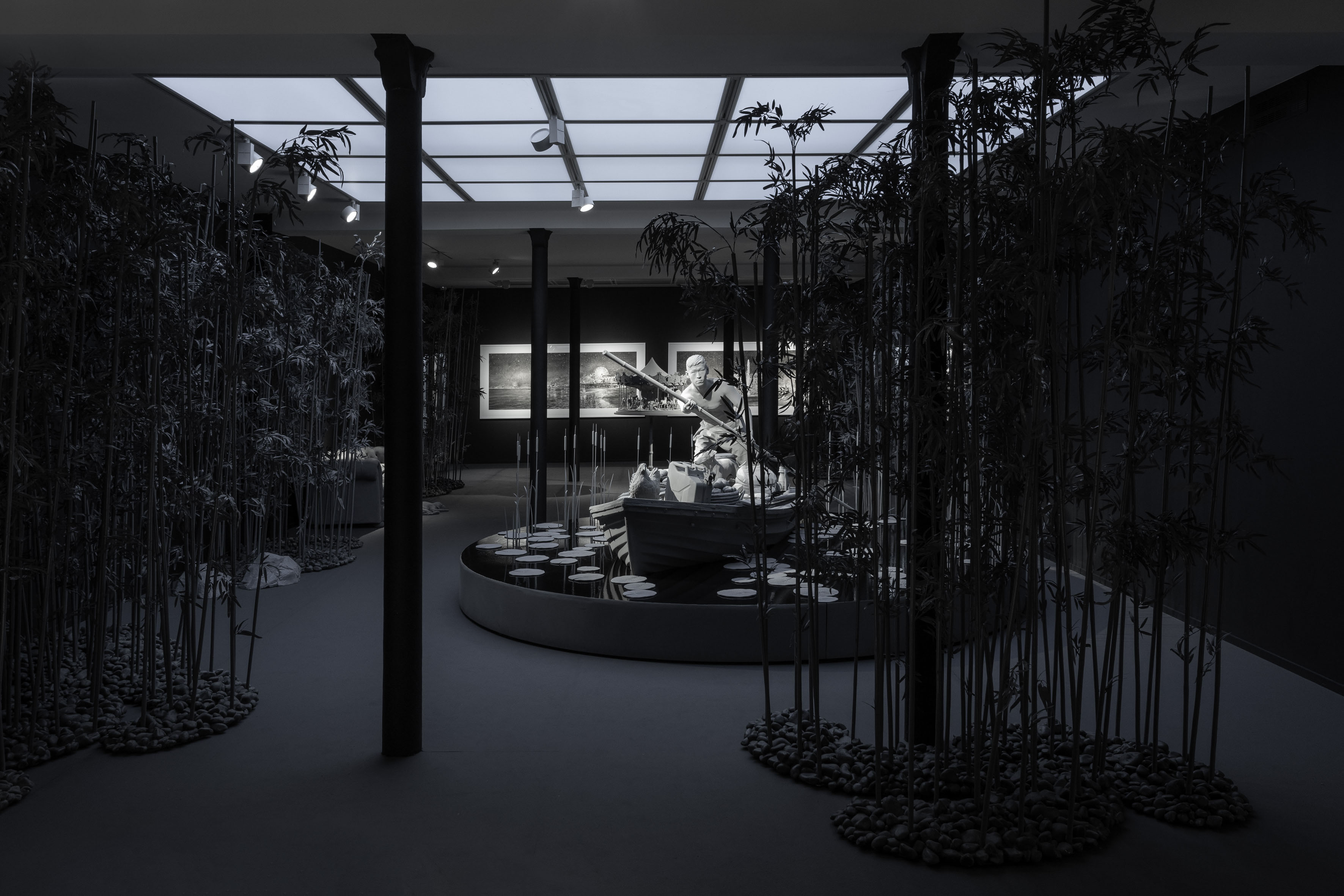
Hans Op De Beeck
On Vanishing
To inaugurate the new season, which in 2026 will mark its 60th anniversary, the Templon Gallery is presenting this autumn a unique project with Belgian artist Hans Op de Beeck.
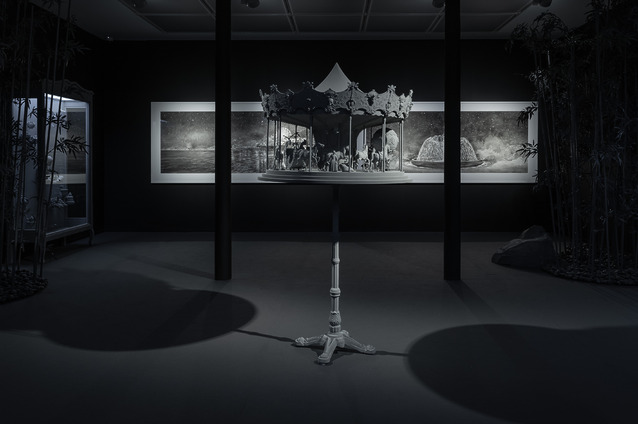
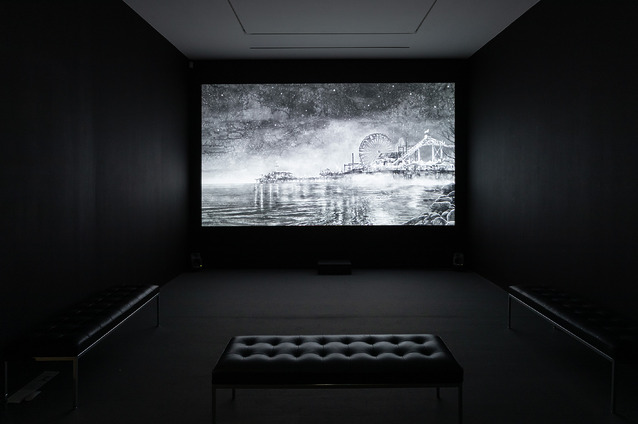

Following the conclusion of Nocturnal Journey, Op de Beeck’s critically acclaimed institutional solo exhibition at the Royal Museum of Fine Arts in Antwerp, On Vanishing showcases a cohesive collection of recent and new sculptures, watercolors, and an animated film.
Echoing the ambiguous signification of ‘Vanishing’, with a linguistical meaning; ‘disappearing suddenly and completely’, or, in mathematical terms, ‘becoming zero’, Op de Beeck is fascinated by the moments in which human beings briefly become nothing or nobody, relinquishing a linguistic, logical, and rational understanding of the world and slipping into a state of self-loss and timelessness.
His renowned monumental, often monochrome, sculptural installations that plunge visitors into silent and introspective universe, explore temporality, memory and the human condition. Op de Beeck uses both minimalist as well as most ornate aesthetics to evoke scenes, equally familiar as mysterious, where the apparent simplicity of the form discreetly contains an emotional richness and a complexity of references.
His fictitious interiors, outdoor scenes, still lives and human figures seemingly frozen in time Op de Beeck seeks to capture suspended moments, fragments of life, lying outside linear narrative. This approach along with its treatment of the human body and spaces embraces the legacy of both classical sculpture as well as cinematographic imagery, while distancing itself from that same legacy with forms of abstraction in its representations. In contrast to classical statuary and its glorification of the individual or divinity, Op de Beeck strives to express the fleeting nature of existence, opting for a form of universal melancholic anonymity.
This “Wunderkammer”-like double exhibition, designed as a cabinet of curiosities, is imbued with the subtle presence of the marvelous, rooted not in a sense of whimsy but rather in the sculptures’ capacity to interpret reality and create an enigmatic, dreamlike atmosphere. Op de Beeck’s sculptural works with their soft, velvety monochrome skin, alongside his new black and white animated film and watercolour paintings, amplify the sensation of worlds suspended in time and space. The viewer is invited to partake in a form of active contemplation, discovering in turn a seated little girl with angel’s wings lost in her thoughts, a classic display cabinet showing a nocturnal pier with a Ferris wheel under a starry sky, or a life size enigmatic horseman with a little monkey on his shoulder holding a parasol over his head.
The way the artist plays with the perception of scale and atmosphere sparks a disconnect, a feeling of strangeness when confronted with scenes lifted out of the ordinary. Each work offers us the seed of yet another possible story. With his characteristic grey tones and carefully thought-out staging, Op de Beeck transforms the prosaic into an almost magical experience where simplicity gives birth to the unexpected and a moment of wonder.
Hans Op de Beeck has held substantial institutional solo exhibitions at various prominent venues, including: GEM Museum of Contemporary Art, The Hague, Netherlands (2004); MUHKA Museum of Contemporary Art, Antwerp, Belgium (2006); Centraal Museum, Utrecht, Netherlands (2007); Towada Art Center, Japan (2008); Smithsonian’s Hirshhorn Museum and Sculpture Garden, Washington, USA (2010); Kunstmuseum Thun, Switzerland (2011); Centro de Arte Caja de Burgos, Spain (2011); Butler Gallery, Kilkenny, Ireland (2012); Kunstverein Hanover, Germany (2012); Tampa Museum of Art, USA (2013); Harn Museum of Art, Gainesville, USA (2013); FRAC Paca, Marseille, France (2013); MIT List Visual Arts Center, Cambridge, USA (2014); MOCA Cleveland, USA (2014); Sammlung Goetz, Munich, Germany (2014); Screen Space, Melbourne, Australia (2015); Château de Chimay, Belgium (2015); Espace 104, Paris, France (2016); Kunstmuseum Wolfsburg, Germany (2017); Fondazione Pino Pascali, Polignano a Mare, Italy (2017); Kunstraum Dornbirn, Germany (2017); Museum Morsbroich, Leverkusen, Germany (2017); Galleria Continua, Boissy-le-Châtel, France (2018); Scheepvaartmuseum, Amsterdam, Netherlands (2018); Kunsthalle Krems, Krems an der Donau, Austria (2019); Amos Rex Museum, Helsinki, Finland (2022); The Nordic Watercolour Museum, Skärhamn, Sweden (2024), The Royal Museum of Fine Arts Antwerp, Antwerp, Belgium (2025).
Op de Beeck has participated in numerous group exhibitions at institutions including: Museo Reina Sofía, Madrid, Spain; Scottsdale Museum of Contemporary Art, Arizona, USA; ZKM, Karlsruhe, Germany; MACRO, Rome, Italy; Whitechapel Art Gallery, London, UK; MoMA PS1, New York, USA; Musée National d’Art Moderne, Centre Pompidou, Paris, France; Wallraf-Richartz Museum, Cologne, Germany; Hangar Bicocca, Milan, Italy; Hara Museum of Contemporary Art, Tokyo, Japan; 21C Museum, Louisville, Kentucky, USA; The Drawing Center, New York, USA; Kunsthalle Wien, Vienna, Austria; Shanghai Art Museum, Shanghai, China; MAMBA, Buenos Aires, Argentina; Haus der Kunst, Munich, Germany; Museo d’Arte Moderna di Bologna, Italy; Kunstmuseum Bonn, Germany; Den Frie Center of Contemporary Art, Copenhagen, Denmark; Royal Museum of Fine Arts, Brussels, Belgium; Frankfurter Kunstverein, Frankfurt am Main, Germany; Museum Kunstpalast, Düsseldorf, Germany; Tate Modern, London, UK.
His work has been featured in prestigious art events such as the Venice Biennale, Italy; the Shanghai Biennale, China; the Aichi Triennale, Japan; the Singapore Biennale, Singapore; Art Summer University at Tate Modern, London, UK; the Kochi-Muziris Biennale, India; Art Basel Miami Beach, USA; Art Basel Unlimited, Basel, Switzerland; Setouchi Triennale, Shodoshima, Japan; Sculpture in the Courtyard at the State Hermitage Museum, St. Petersburg, Russia; Bruges Triennale, Belgium; the Lyon Biennale, France, and many other international art events.
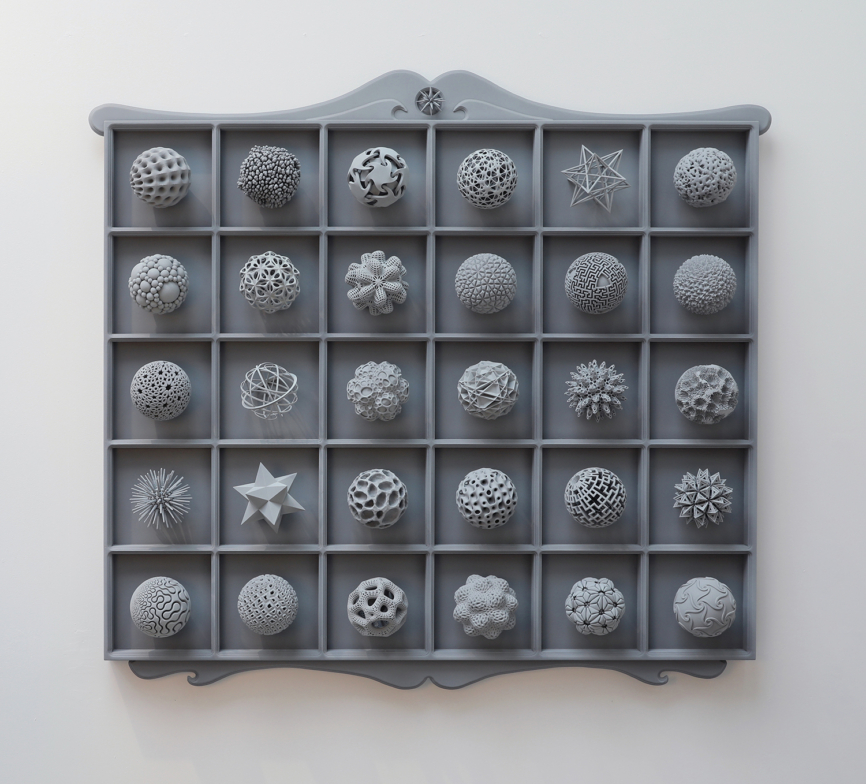
Spheres
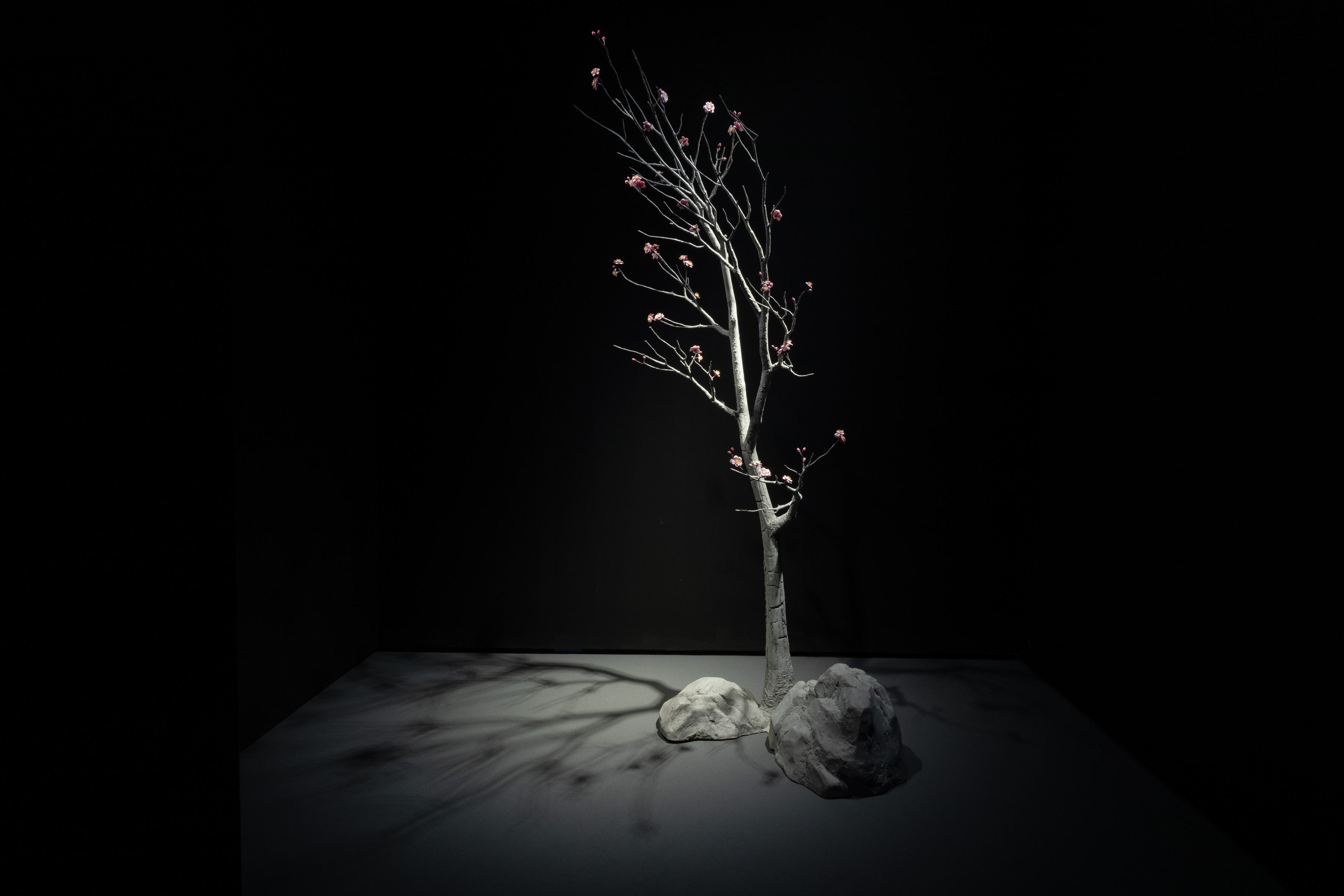
The artist
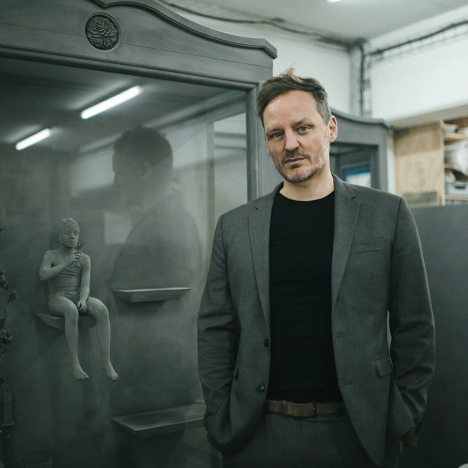
Born in 1969, Hans Op de Beeck lives and works in Brussels, Belgium. He produces large installations, sculptures, films, drawings, paintings, photographs and texts. Over the past twenty years Op de Beeck realised numerous monumental ‘sensorial’ installations: tactile deserted spaces as an empty set for the viewer to walk through or sit down in, sculpted havens for introspection. His work is a reflection on our complex society and the universal questions of meaning and mortality that resonate within it. He regards man as a being who stages the world around him in a tragi-comic way. Above all, Op de Beeck is keen to stimulate the viewers’ senses, and invite them to really experience the image. He seeks to create a form of visual fiction that delivers a moment of wonder and silence.
